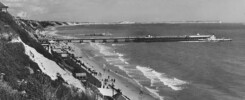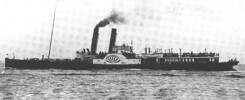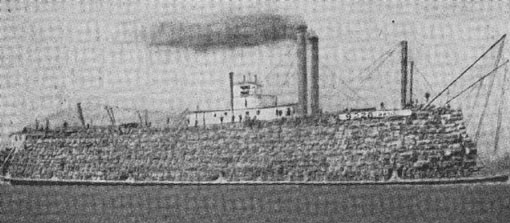
At first glance this paddle steamer looks as if it has been attacked by a swarm of gigantic bees which have gone to work transforming it into a floating honeycomb. In fact it is a Mississippi paddler which has shed its more usual cargo of bourbon quaffing travellers for a less troublesome consignment of bales of cotton on their way to be transformed into shirts, sheets and summer frocks.

Paddle steamers like the America (1898 – 1926) (pictured above) were regularly used for moving cotton around on the Mississippi and some were specially adapted with the central cabin structure narrowed to accommodate more and more bales around the outside decks. The cotton does seem to take up a lot of space and must have had a seriously deleterious effect on the views from the stateroom windows.
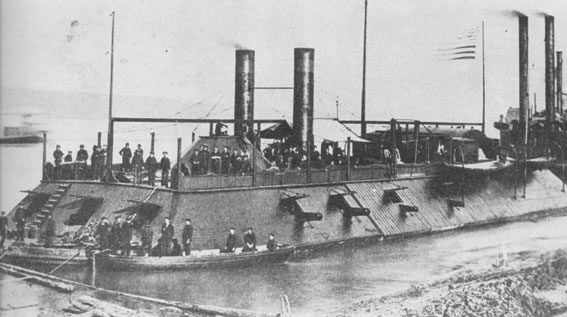
Another odd American paddle steamer was the gunboat Cairo, built in 1861 as one of a fleet of seven similar vessels for the Union side during the American Civil War. Sometimes known as “Pook Turtles”, after their designer Samuel M Pook, they were not friendly looking craft but perhaps were not as fearsome in battle as in looks as the Cairo had a very short career being sunk by a mine in the River Yazoo less than a year after being commissioned.
She was raised in the mid 1960s and restored as a static exhibit at the Vicksburg National Military Park in America.
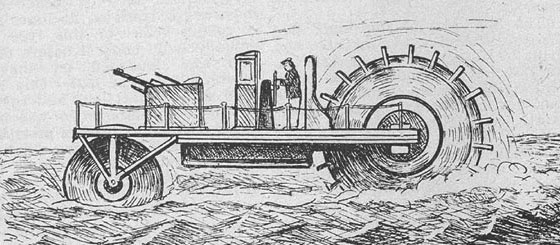
Most bizarre of all paddle wheel oddities I have come across are “Roller Ships”. This sounds like an April Fool joke but it isn’t. The principle is that such vessels can be built on buoyant wheels so that there is no hull in the water to provide drag slowing the craft down. In this way, in theory at least, they should be able to go at breakneck speeds in relation to their engine size.
The first example, the Buoyant Propeller, was built by Capt Fryer in America in 1880. It was mounted on three large and watertight drums with sticky out bits on them to provide the propulsion as they were rotated by the engine. A Canadian, Mr F A Knapp, built a larger version, 110ft long, in 1897 but this managed only six knots rather than the calculated design speed of thirty knots and was very prone to slide sideways over the water like a Lilo. It was also not much good at coping with waves.
The one illustrated above is a design for an inshore submarine chaser with a suitable gun on the fore deck but it never got further than the drawing board. Rather more successful were several small versions which had short careers before the Second World War prospecting for oil amongst the swamps around the Gulf of Mexico.
As a major means of ship propulsion this exciting idea never really took off. I just can’t think why!
Kingswear Castle returned to service in 2023 after the first part of a major rebuild which is designed to set her up for the next 25 years running on the River Dart. The Paddle Steamer Kingswear Castle Trust is now fund raising for the second phase of the rebuild. You can read more about the rebuilds and how you can help if you can here.
John Megoran

